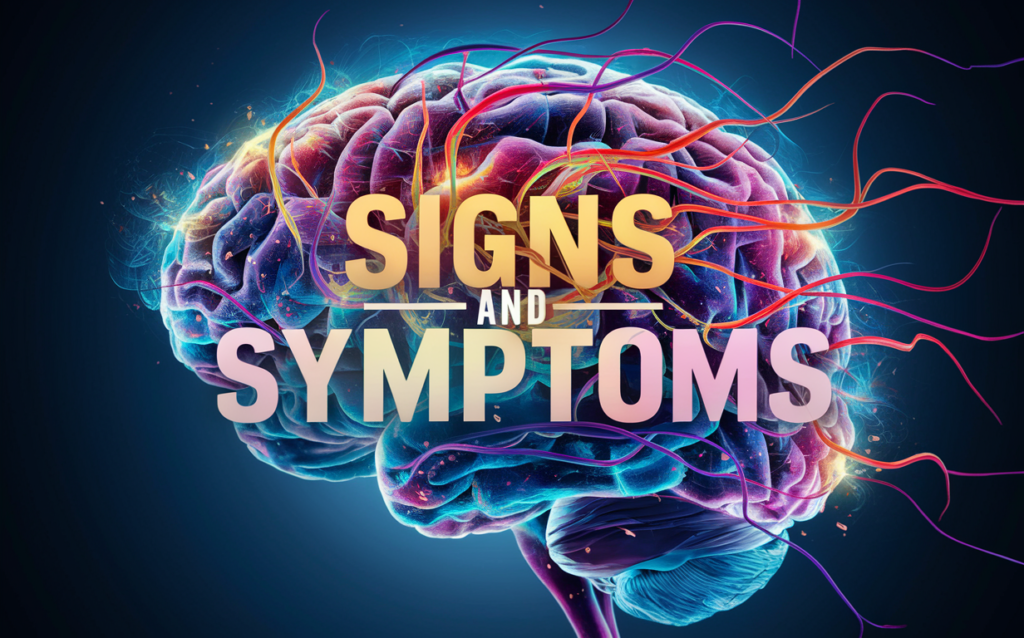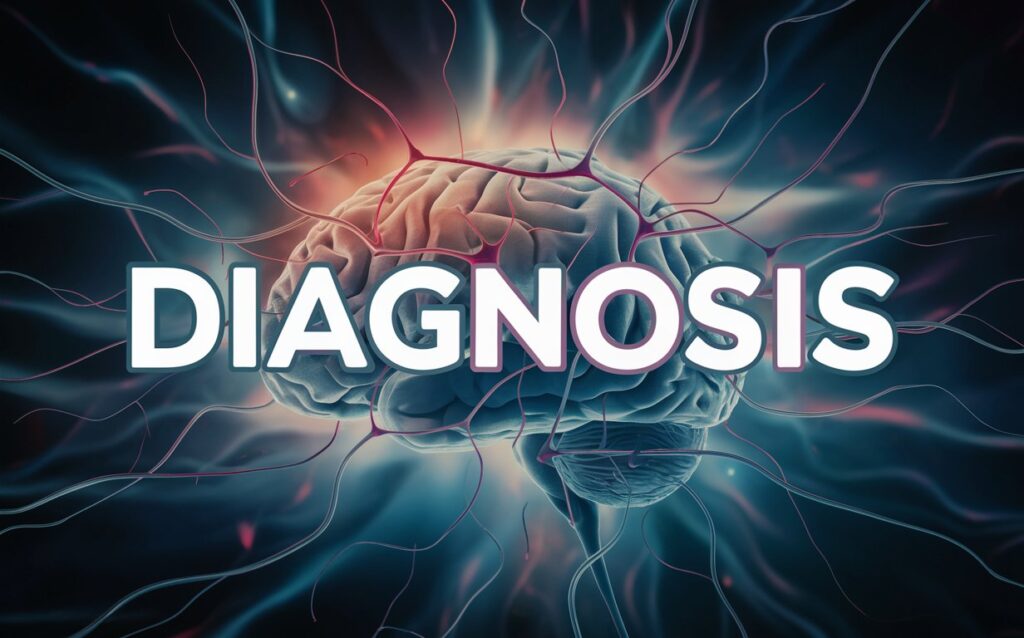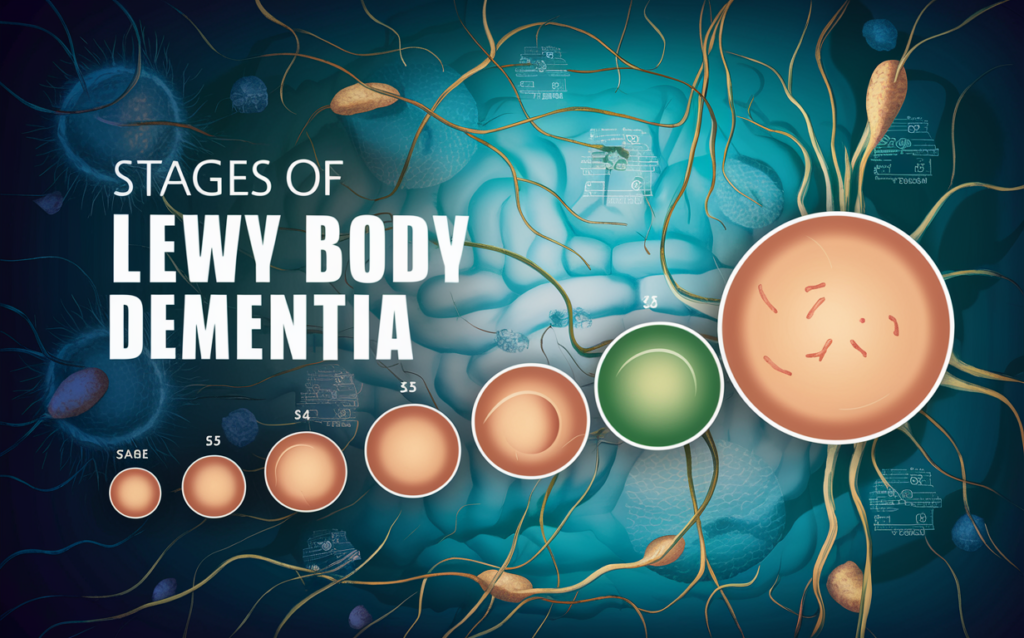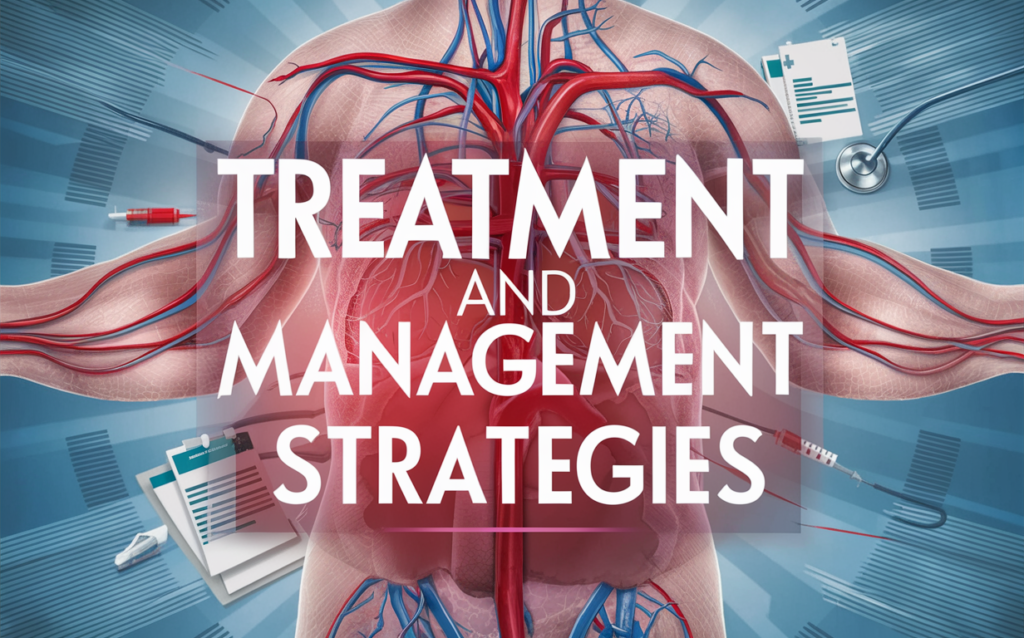1. Introduction: 7 Stages of Lewy Body Dementia
What Is Lewy Body Dementia?
Lewy Body Dementia (LBD) is a complex and progressive neurological disorder that affects cognitive functions, motor control, and behavior. It is characterized by the abnormal accumulation of a protein called alpha-synuclein in the brain, forming deposits known as Lewy bodies. These protein deposits disrupt the normal functioning of brain cells, leading to a gradual decline in mental abilities and physical capabilities.
LBD is one of the most common types of dementia after Alzheimer’s disease. It encompasses two related conditions: Dementia with Lewy bodies (DLB) and Parkinson’s disease dementia (PDD). While both conditions share similar symptoms and pathological features, DLB typically starts with cognitive symptoms, and PDD begins with movement problems, followed by cognitive decline.
Table of Contents
Understanding Lewy Body Dementia
Lewy Body Dementia affects multiple aspects of a person’s life, including thinking, movement, behavior, and mood. The symptoms can vary significantly from one person to another and may fluctuate over time. This variability makes LBD particularly challenging to diagnose and manage.
One of the hallmark features of LBD is its fluctuating nature. Patients may experience sudden changes in their ability to think and function, with periods of relative clarity followed by significant impairment. These fluctuations can occur from hour to hour or day to day, often making the condition difficult for caregivers and healthcare professionals to predict and address.
Lewy Body Dementia Causes
The exact cause of Lewy Body Dementia is still not fully understood. However, researchers believe that a combination of genetic, environmental, and age-related factors contribute to the development of the disease.
Genetic Factors:
While most cases of LBD are sporadic and occur without a clear family history, some genetic mutations have been associated with an increased risk of developing the disease. For example, mutations in the GBA and SNCA genes have been linked to LBD.
Environmental Factors:
Exposure to certain environmental toxins and chemicals, such as pesticides and heavy metals, may increase the risk of developing LBD. Additionally, a history of traumatic brain injury has been identified as a potential risk factor.
Age-Related Factors:
Aging is the most significant risk factor for LBD, with the majority of cases occurring in individuals over the age of 60. As people age, the likelihood of abnormal protein accumulation and subsequent brain cell damage increases.
Researchers are continuing to investigate these and other potential causes of LBD to better understand the disease and develop more effective treatments.
Understanding Lewy Body Dementia involves recognizing its complexity and the various factors that contribute to its onset and progression. Increased awareness and knowledge about the condition are crucial for early diagnosis, effective management, and improved quality of life for those affected by LBD and their families.

2. Signs and Symptoms
Lewy Body Dementia: Signs and Symptoms
Lewy Body Dementia (LBD) presents a broad spectrum of symptoms that can vary greatly among individuals and may change as the disease progresses. Recognizing these signs early can help in managing the condition more effectively. The symptoms of LBD typically fall into three main categories: cognitive, motor, and behavioral.
Cognitive Symptoms:
Fluctuating Attention and Alertness:
Patients with LBD often experience variations in their cognitive function. They might have episodes of confusion, drowsiness, or staring spells, interspersed with periods of normal cognition.
Memory Impairment:
While memory problems in LBD are generally less severe than in Alzheimer’s disease, they still occur and can affect short-term memory and the ability to learn new information.
Visual Hallucinations:
These are common in LBD, often appearing early in the disease. Patients may see shapes, people, or animals that aren’t there, and these hallucinations are typically vivid and detailed.
Executive Dysfunction:
This includes difficulty in planning, problem-solving, and performing tasks that require attention and organization. Patients might struggle with daily activities that were previously routine.
Motor Symptoms:
Parkinsonism:
Many patients with LBD exhibit motor symptoms similar to Parkinson’s disease, such as bradykinesia (slowness of movement), rigidity, and tremors. These symptoms can affect balance and coordination, increasing the risk of falls.
Shuffling Walk:
Patients may develop a characteristic shuffling gait, which, combined with motor symptoms, significantly impacts mobility.
Behavioral and Mood Symptoms:
Depression and Anxiety:
Mood disturbances are common in LBD. Patients often experience depression, anxiety, and apathy.
REM Sleep Behavior Disorder (RBD):
This disorder causes patients to act out their dreams, sometimes violently. It can precede other symptoms by years.
Fluctuations in Mood and Behavior:
Sudden changes in behavior, irritability, and emotional instability can occur, often without a clear trigger.
Lewy Body Dementia Symptoms
LBD symptoms can be grouped further into primary and secondary symptoms based on their prevalence and impact on daily life:
Primary Symptoms:
Cognitive Decline:
Progressive loss of cognitive function, including memory, reasoning, and visuospatial skills.
Visual Hallucinations:
Frequent and recurrent hallucinations that are usually well-formed and detailed.
Motor Symptoms:
Parkinsonism features such as tremors, muscle stiffness, and slow movements.
Secondary Symptoms:
Autonomic Dysfunction:
Issues such as blood pressure fluctuations, dizziness, and problems with bowel and bladder control.
Sensitivity to Antipsychotic Medications:
People with LBD often have severe reactions to antipsychotic drugs, which can exacerbate symptoms.
Sleep Disorders:
Including REM Sleep Behavior Disorder and excessive daytime sleepiness.
The Impact of Lewy Body Dementia
Lewy Body Dementia significantly impacts both patients and their families. The multifaceted symptoms require comprehensive and continuous management, and the fluctuating nature of the disease can be particularly challenging. The impact on daily life can be profound, with patients needing assistance with activities of daily living as the disease progresses.
On Patients:
Daily Functioning:
The combination of cognitive and motor symptoms can make routine tasks challenging. Patients may struggle with personal care, mobility, and communication.
Quality of Life:
Frequent hallucinations and mood changes can distress patients, leading to reduced quality of life and increased dependency on caregivers.
On Families and Caregivers:
Caregiving Burden:
The unpredictable nature of LBD symptoms can place a significant emotional and physical burden on caregivers. They must constantly adapt to the patient’s changing needs.
Emotional Toll:
Witnessing the progressive decline of a loved one can be emotionally taxing. Caregivers often experience stress, anxiety, and depression.
Financial Strain:
The costs associated with medical care, medications, and potential loss of income can create financial difficulties for families.
Understanding the signs and symptoms of Lewy Body Dementia is crucial for early diagnosis and effective management. Awareness of the disease’s impact on both patients and caregivers can help in providing the necessary support and resources to cope with this challenging condition.

3. Risk Factors and Complications
Lewy Body Dementia Risk Factors
The exact cause of Lewy Body Dementia (LBD) remains unclear, but researchers have identified several risk factors that may increase the likelihood of developing the disease. Understanding these risk factors can help in early detection and potentially mitigate some risks through lifestyle changes.
Age:
- The most significant risk factor for LBD is age. The disease primarily affects individuals over the age of 60, with the risk increasing as one gets older.
Genetics:
- Family History: A family history of LBD or other types of dementia increases the risk. Although LBD is generally not inherited, certain genetic mutations, such as those in the GBA and SNCA genes, have been linked to an increased risk.
- Genetic Mutations: Research has identified specific genetic mutations that may contribute to LBD. These include mutations in genes associated with the production and regulation of alpha-synuclein, the protein that forms Lewy bodies.
Gender:
- LBD appears to be more common in men than women. The reasons for this gender disparity are not fully understood and are a subject of ongoing research.
Health Conditions:
- Parkinson’s Disease: Individuals with Parkinson’s disease have a higher risk of developing LBD. This is particularly true if cognitive symptoms appear within a year of the onset of motor symptoms.
- Other Neurological Conditions: A history of other neurological conditions, such as multiple system atrophy or progressive supranuclear palsy, may also increase the risk.
Environmental Factors:
- Exposure to Toxins: Long-term exposure to environmental toxins such as pesticides, herbicides, and heavy metals may elevate the risk of developing LBD.
- Traumatic Brain Injury: A history of traumatic brain injury (TBI), especially repeated injuries, has been associated with a higher risk of LBD.
Lewy Body Dementia Complications
Lewy Body Dementia can lead to a variety of complications that affect both the patient and their caregivers. These complications often arise from the progression of symptoms and can significantly impact the quality of life and overall health.
Increased Dependence:
- As LBD progresses, patients become increasingly dependent on others for daily activities. This includes personal care, mobility, and decision-making, which can be burdensome for caregivers.
Increased Risk of Infections:
- Patients with LBD are at a higher risk of infections, particularly urinary tract infections and pneumonia. This is often due to immobility, difficulty swallowing, and a weakened immune system.
Falls and Injuries:
- Motor symptoms such as rigidity, tremors, and balance issues increase the risk of falls and related injuries. Falls can lead to fractures, head injuries, and further complications requiring hospitalization.
Severe Reactions to Medications:
- People with LBD are highly sensitive to certain medications, particularly antipsychotic drugs. These medications can cause severe side effects, including increased confusion, sedation, and worsening of motor symptoms.
Psychiatric Complications:
- Hallucinations, delusions, and severe mood swings can lead to psychiatric complications. These symptoms can be distressing for both patients and caregivers, sometimes necessitating psychiatric intervention.
Nutritional Deficiencies:
- Difficulty swallowing (dysphagia) and decreased appetite can lead to significant weight loss and nutritional deficiencies. These issues often require dietary adjustments and sometimes the use of feeding tubes.
Sleep Disorders:
- REM Sleep Behavior Disorder (RBD) and other sleep disturbances are common in LBD. These can lead to poor sleep quality, daytime sleepiness, and increased cognitive impairment.
Cognitive Decline:
- Progressive cognitive decline affects memory, executive function, and visuospatial skills, leading to difficulties in communication and comprehension. This decline complicates daily life and increases the need for comprehensive care.
Managing Risk Factors and Complications
While the risk factors for LBD cannot be entirely eliminated, understanding and managing them can improve the quality of life for patients and caregivers. Early diagnosis and intervention are key to addressing symptoms and slowing disease progression.
Regular Medical Check-Ups:
- Regular health check-ups can help in the early detection of LBD, especially for those with a family history or other risk factors. Monitoring for early symptoms allows for timely intervention.
Healthy Lifestyle Choices:
- Adopting a healthy lifestyle, including a balanced diet, regular physical activity, and mental exercises, can support overall brain health and potentially reduce the risk of LBD.
Avoiding Environmental Toxins:
- Limiting exposure to pesticides, herbicides, and other environmental toxins can mitigate one of the environmental risk factors associated with LBD.
Managing Comorbid Conditions:
- Proper management of existing health conditions, such as Parkinson’s disease or diabetes, can help in reducing the risk of complications related to LBD.
Caregiver Support and Education:
- Educating caregivers about LBD and its progression is crucial. Support groups, counseling, and respite care can help caregivers manage the emotional and physical demands of caring for someone with LBD.
Understanding the risk factors and potential complications of Lewy Body Dementia is essential for patients, caregivers, and healthcare providers. It allows for proactive management and planning, which can significantly enhance the quality of life and care for those affected by this challenging disease.

4. Diagnosis
Lewy Body Dementia Diagnosis
Diagnosing Lewy Body Dementia (LBD) can be particularly challenging due to its overlapping symptoms with other neurological disorders, such as Alzheimer’s disease and Parkinson’s disease. However, a thorough diagnostic process can help differentiate LBD from these other conditions. The diagnosis typically involves a combination of clinical evaluation, medical history review, neurological examinations, and various tests to rule out other potential causes of symptoms.
Clinical Evaluation and Medical History
The first step in diagnosing LBD involves a comprehensive clinical evaluation and detailed medical history. This process includes:
Patient History:
Symptom Onset and Progression:
Understanding when symptoms first appeared and how they have progressed over time is crucial. Specific questions about cognitive fluctuations, hallucinations, motor symptoms, and sleep disturbances are essential.
Family History:
A detailed family history can reveal any genetic predisposition to LBD or other forms of dementia and neurological disorders.
Medication History:
Reviewing all current and past medications helps identify any drug-related symptoms and sensitivity, particularly to antipsychotic medications.
Physical and Neurological Examinations:
Neurological Assessment:
A neurological examination assesses motor symptoms, such as tremors, rigidity, bradykinesia (slowness of movement), and postural instability. It also includes evaluating cognitive function, coordination, reflexes, and sensory responses.
Cognitive Testing:
Standardized cognitive tests, such as the Mini-Mental State Examination (MMSE) or the Montreal Cognitive Assessment (MoCA), help evaluate memory, attention, language, visuospatial skills, and executive function.
Diagnostic Criteria for Lewy Body Dementia
The diagnosis of LBD is often guided by established criteria, such as the consensus criteria developed by the Dementia with Lewy Bodies Consortium. Key diagnostic features include:
Core Clinical Features:
Fluctuating Cognition:
Marked variations in attention and alertness.
Recurrent Visual Hallucinations:
Well-formed and detailed visual hallucinations.
Parkinsonism:
Motor symptoms similar to Parkinson’s disease, such as bradykinesia, rigidity, and tremors.
REM Sleep Behavior Disorder (RBD):
A sleep disorder characterized by the acting out of dreams, often with vivid and violent movements.
Supportive Clinical Features:
Severe Sensitivity to Antipsychotic Medications:
Severe and often dangerous reactions to neuroleptic medications.
Systemic Autonomic Dysfunction:
Symptoms such as orthostatic hypotension (a significant drop in blood pressure upon standing), urinary incontinence, and constipation.
Non-Visual Hallucinations:
Auditory, olfactory, or tactile hallucinations.
Diagnostic Tests and Imaging
While there is no definitive test for LBD, several diagnostic tests and imaging studies can support the diagnosis and exclude other conditions.
Brain Imaging:
Magnetic Resonance Imaging (MRI):
An MRI can identify structural brain changes, such as atrophy in specific areas, and rule out other causes of dementia symptoms, such as strokes or tumors.
Positron Emission Tomography (PET) and Single Photon Emission Computed Tomography (SPECT):
These imaging techniques can assess brain function and detect patterns of brain activity that are typical of LBD, such as reduced dopamine transporter uptake in the basal ganglia.
Polysomnography (Sleep Study):
REM Sleep Behavior Disorder (RBD) Detection:
A sleep study can confirm the presence of RBD, which is a strong indicator of LBD.
Laboratory Tests:
Blood Tests:
Routine blood tests can rule out other conditions that might cause similar symptoms, such as vitamin deficiencies, thyroid disorders, and infections.
Cerebrospinal Fluid (CSF) Analysis:
In some cases, analyzing the CSF for biomarkers, such as abnormal proteins, can aid in differentiating LBD from other types of dementia.
Differential Diagnosis
Differentiating LBD from other forms of dementia and neurological disorders is critical for accurate diagnosis and treatment. Conditions that need to be considered include:
Alzheimer’s Disease:
- While Alzheimer’s primarily affects memory in its early stages, LBD often presents with more pronounced fluctuations in cognition, visual hallucinations, and Parkinsonian symptoms.
Parkinson’s Disease:
- Parkinson’s disease dementia (PDD) and LBD share many symptoms, but the timing of cognitive decline relative to motor symptoms helps differentiate them. In PDD, cognitive impairment occurs after the onset of motor symptoms, whereas in LBD, cognitive and motor symptoms often appear concurrently or with cognitive symptoms preceding motor issues.
Vascular Dementia:
- Caused by cerebrovascular disease, vascular dementia presents with a stepwise progression of symptoms and is often associated with evidence of stroke on imaging studies.
Frontotemporal Dementia (FTD):
- FTD typically affects behavior and language rather than the hallucinations and motor symptoms seen in LBD.
Challenges in Diagnosis
Diagnosing LBD is challenging due to its overlapping symptoms with other disorders and its fluctuating nature. Misdiagnosis is common, especially in the early stages. Patients might initially receive a diagnosis of Alzheimer’s or Parkinson’s disease before LBD is correctly identified.
Importance of Early and Accurate Diagnosis
An early and accurate diagnosis of LBD is crucial for several reasons:
Appropriate Treatment:
- Tailoring treatment to manage the specific symptoms of LBD, such as avoiding medications that can worsen symptoms.
Care Planning:
- Allowing patients and families to plan for the future, make informed decisions, and access appropriate support services.
Symptom Management:
- Implementing strategies to manage symptoms and improve the quality of life for patients and caregivers.
Research Participation:
- Enabling patients to participate in clinical trials and contribute to research efforts aimed at understanding and treating LBD.
Accurate diagnosis of Lewy Body Dementia requires a multifaceted approach, incorporating clinical evaluations, diagnostic criteria, imaging studies, and differential diagnosis to ensure the best possible outcomes for patients and their families.

5. Stages of Lewy Body Dementia
What Are the 7 Stages of Lewy Body Dementia?
Lewy Body Dementia (LBD) progresses through seven stages, each characterized by increasingly severe cognitive, motor, and behavioral symptoms. Understanding these stages can help patients, caregivers, and healthcare providers anticipate changes and manage the disease more effectively.
Stage 1: Early Symptoms
In the initial stage, symptoms are subtle and often mistaken for normal aging or stress.
Mild Cognitive Impairment:
- Minor memory lapses and slight difficulties with concentration and attention.
- Mild issues with problem-solving and complex tasks.
Early Motor Symptoms:
- Slight stiffness or tremors may begin to appear, but are often not noticeable.
Stage 2: Mild Cognitive Impairment
Cognitive symptoms become more noticeable but do not yet significantly impact daily life.
Increased Forgetfulness:
- More frequent memory lapses, such as forgetting recent events or conversations.
Early Visual Hallucinations:
- Mild hallucinations, often of simple shapes or shadows, may begin.
Mild Motor Symptoms:
- Increased rigidity and slight shuffling when walking.
Stage 3: Mild Dementia
Cognitive and motor symptoms start to interfere with daily activities.
Cognitive Decline:
- More pronounced memory problems and difficulties with organizing and planning.
- Issues with visuospatial abilities, such as judging distances.
Hallucinations and Delusions:
- Visual hallucinations become more frequent and vivid.
- Possible delusional thinking and false beliefs.
Motor Symptoms:
- Noticeable bradykinesia (slowness of movement) and increased tremors.
Mood Changes:
- Depression, anxiety, and irritability may develop.
Stage 4: Moderate Dementia
Symptoms become more severe and significantly affect daily life.
Severe Cognitive Decline:
- Difficulty with basic tasks such as dressing, cooking, and managing finances.
- Severe problems with attention and short-term memory.
Persistent Hallucinations:
- Hallucinations become more frequent and disturbing.
Motor Impairments:
- Increased difficulty with walking, frequent falls, and balance problems.
- Muscle rigidity and tremors are more pronounced.
Behavioral Changes:
- Increased agitation, paranoia, and mood swings.
Stage 5: Moderately Severe Dementia
Cognitive and physical abilities continue to deteriorate, requiring significant assistance.
Dependency on Caregivers:
- Need help with most daily activities, including bathing and dressing.
- Severe memory loss and confusion.
Intense Hallucinations and Delusions:
- Hallucinations and delusions are persistent and can be very distressing.
Severe Motor Symptoms:
- Major difficulties with mobility, often requiring a walker or wheelchair.
- High risk of falls and injuries.
Sleep Disorders:
- REM Sleep Behavior Disorder (RBD) is common, leading to disruptive and violent sleep patterns.
Stage 6: Severe Dementia
Patients require extensive care and supervision.
Profound Cognitive Decline:
- Inability to perform most daily activities without assistance.
- Severe disorientation, even in familiar settings.
Constant Hallucinations:
- Hallucinations and delusions are a major aspect of daily life.
Extreme Motor Difficulties:
- Severe rigidity, tremors, and bradykinesia.
- Difficulty swallowing, leading to risks of aspiration and pneumonia.
Behavioral Symptoms:
- Significant changes in personality and severe mood swings.
Stage 7: End-Stage Dementia
In the final stage, patients are completely dependent on others for care.
Complete Dependency:
- Total assistance required for all activities of daily living.
- Loss of the ability to speak and communicate effectively.
Severe Physical Symptoms:
- Extreme muscle rigidity and loss of motor control.
- Inability to walk or even sit up without support.
Medical Complications:
- High risk of infections, such as pneumonia and urinary tract infections.
- Difficulty eating and swallowing, leading to severe weight loss and malnutrition.
Palliative Care:
- Focus on comfort and quality of life.
- Management of pain and other distressing symptoms.
Managing the Stages of Lewy Body Dementia
Understanding the progression of Lewy Body Dementia allows for better planning and management of the disease. Here are some key strategies for each stage:
Early Stages:
- Focus on early diagnosis and treatment to manage symptoms.
- Implement lifestyle changes to support brain health, such as a balanced diet and regular exercise.
- Consider occupational therapy to maintain independence in daily activities.
Middle Stages:
- Develop a comprehensive care plan involving healthcare professionals, caregivers, and family members.
- Adjust the home environment to ensure safety and prevent falls.
- Use medications to manage symptoms, including cognitive enhancers and medications for mood disorders.
Late Stages:
- Provide full-time care, either at home or in a specialized care facility.
- Focus on comfort and quality of life through palliative care approaches.
- Engage in activities that provide emotional comfort and reduce agitation, such as music therapy and gentle physical exercises.
Understanding the stages of Lewy Body Dementia helps caregivers and healthcare providers anticipate changes and provide appropriate care at each stage. Early recognition and proactive management can significantly improve the quality of life for both patients and their families.

6. Treatment and Management Strategies
Managing Lewy Body Dementia (LBD) requires a multifaceted approach that addresses both the cognitive and motor symptoms as well as the behavioral and psychological aspects of the disease. Treatment and management strategies aim to improve the quality of life for patients and support caregivers in their roles.
Medical Interventions
Medications for Cognitive Symptoms
Cholinesterase Inhibitors:
Donepezil (Aricept), Rivastigmine (Exelon), and Galantamine (Razadyne):
These medications increase the levels of acetylcholine in the brain, which can help improve cognitive function and reduce hallucinations. They are often the first line of treatment for cognitive symptoms in LBD.
Memantine (Namenda):
- This medication regulates the activity of glutamate, another neurotransmitter involved in learning and memory. Memantine may be used in conjunction with cholinesterase inhibitors to enhance cognitive benefits.
Medications for Motor Symptoms
Levodopa:
- Often prescribed to manage Parkinsonian symptoms such as rigidity and bradykinesia. Levodopa can improve motor function but may also exacerbate hallucinations and confusion in some patients.
Dopamine Agonists:
- Medications like Pramipexole and Ropinirole may also be used to address motor symptoms, but with caution due to the risk of worsening psychiatric symptoms.
Medications for Behavioral and Psychological Symptoms
Antipsychotics:
- Quetiapine (Seroquel) and Clozapine (Clozaril): These atypical antipsychotics are sometimes used to manage severe hallucinations and delusions. Traditional antipsychotics should be avoided as they can cause severe reactions in LBD patients.
Antidepressants:
- SSRIs (Selective Serotonin Reuptake Inhibitors) such as Citalopram and Sertraline can help manage depression and anxiety, which are common in LBD.
Anxiolytics:
- Medications like Lorazepam or Clonazepam may be used to manage anxiety and sleep disturbances, though they should be used with caution due to the potential for increased confusion and sedation.
Non-Drug Therapies and Interventions
Cognitive Interventions
Cognitive Stimulation Therapy (CST):
- Structured group activities and exercises designed to improve cognitive function and social interaction. CST has been shown to enhance quality of life and cognitive abilities in dementia patients.
Cognitive Rehabilitation:
- Personalized therapy that focuses on specific cognitive skills, helping patients to maintain their abilities and independence in daily tasks.
Physical and Occupational Therapy
Physical Therapy:
- Aimed at improving mobility, strength, and balance. Physical therapy can help reduce the risk of falls and maintain physical function.
Occupational Therapy:
- Helps patients maintain independence in daily activities such as dressing, eating, and bathing. Occupational therapists can also recommend modifications to the home environment to enhance safety and accessibility.
Speech and Language Therapy
Communication Strategies:
- Speech therapists can work with patients to improve communication skills and manage speech difficulties associated with LBD. Techniques may include exercises to strengthen muscles used in speech and strategies to aid in clear communication.
Swallowing Therapy:
- For patients experiencing dysphagia (difficulty swallowing), speech therapists can provide exercises and strategies to improve swallowing safety and prevent aspiration pneumonia.
Behavioral and Psychosocial Interventions
Structured Routine
Consistent Daily Schedule:
- Establishing a regular daily routine helps reduce confusion and anxiety in LBD patients. A structured schedule can include set times for meals, activities, and rest.
Environmental Modifications
Safe Living Environment:
- Adapting the home to minimize risks and enhance safety is crucial. This includes removing tripping hazards, ensuring good lighting, and installing grab bars in key areas like bathrooms.
Supportive Therapies
Music Therapy:
- Engaging patients with music can have therapeutic benefits, such as reducing agitation, improving mood, and stimulating memories.
Art and Recreational Therapy:
- Activities like drawing, painting, or other forms of creative expression can provide emotional relief and cognitive stimulation.
Education and Support for Caregivers
Training and Education
Caregiver Training Programs:
- These programs provide caregivers with the knowledge and skills needed to manage the complex symptoms of LBD. Training includes how to handle behavioral changes, provide personal care, and manage medications.
Educational Resources:
- Access to information about LBD, its progression, and effective management strategies is crucial. Resources can include books, online courses, and support groups.
Emotional Support
Support Groups:
- Joining caregiver support groups can provide emotional support, reduce feelings of isolation, and offer practical advice from others in similar situations.
Counseling Services:
- Professional counseling can help caregivers cope with the emotional stress and challenges of caring for a loved one with LBD.
Respite Care
Temporary Care Services:
- Respite care provides temporary relief for caregivers by offering professional care services for short periods. This can help prevent caregiver burnout and allow caregivers to attend to their own health and well-being.
Palliative Care and End-of-Life Planning
Palliative Care
Focus on Comfort and Quality of Life:
- Palliative care involves managing symptoms to improve the quality of life for both patients and their families. This includes pain management, addressing emotional and spiritual needs, and providing support for decision-making.
Advance Care Planning
Legal and Financial Planning:
- Early in the diagnosis, it is important to address legal and financial matters, including advance directives, powers of attorney, and wills.
End-of-Life Care Preferences:
- Discussing and documenting preferences for end-of-life care ensures that the patient’s wishes are respected. This can include decisions about life-sustaining treatments and hospice care.
Communication and Coordination with Healthcare Providers
Regular Medical Follow-Up:
- Ongoing communication with healthcare providers ensures that treatment plans are adjusted as the disease progresses and new symptoms arise.
Multidisciplinary Care Team:
- Involving a team of healthcare professionals, including neurologists, psychiatrists, geriatricians, and primary care physicians, helps provide comprehensive and coordinated care.
Effective management of Lewy Body Dementia involves a combination of medical treatments, non-drug therapies, environmental modifications, and robust support systems for caregivers. By addressing the multifaceted needs of patients and caregivers, these strategies aim to enhance the quality of life and provide comprehensive care throughout the progression of the disease.

7. Living with Lewy Body Dementia
Living with Lewy Body Dementia (LBD) presents unique challenges, not only for those diagnosed with the disease but also for their caregivers and families. Managing daily life with LBD requires a comprehensive approach that encompasses health management, safety measures, emotional well-being, and strong support systems.
Daily Life and Routine
Establishing a Routine
Consistent Schedule:
- Developing and maintaining a consistent daily routine can help reduce confusion and anxiety in individuals with LBD. Regular schedules for meals, medications, activities, and rest periods provide structure and stability.
Simplifying Tasks:
- Breaking down complex tasks into simpler, manageable steps can help individuals with LBD maintain a sense of independence and accomplishment. Using visual cues and written instructions can also be beneficial.
Home Environment
Creating a Safe Space:
- Modify the home to reduce fall risks and enhance safety. This includes installing grab bars in bathrooms, removing loose rugs, and ensuring adequate lighting throughout the house.
- Use furniture with rounded edges to prevent injuries and keep pathways clear of obstacles.
Personalized Environment:
- Decorate the living space with familiar and comforting items, such as photographs, favorite artwork, and mementos, to create a sense of familiarity and comfort.
Cognitive and Physical Activities
Cognitive Stimulation
Engaging Activities:
- Encourage participation in activities that stimulate the mind, such as puzzles, reading, games, and crafts. Tailoring activities to the individual’s interests can enhance engagement and enjoyment.
Memory Aids:
- Use tools like calendars, clocks, and labeled photographs to help with orientation and memory. Keeping a daily journal can also provide a sense of routine and a way to track experiences.
Physical Exercise
Regular Exercise:
- Engage in regular physical activities to maintain mobility and overall health. Activities such as walking, swimming, and chair exercises can be adapted to the individual’s abilities.
Physical Therapy:
- Working with a physical therapist can help develop a tailored exercise program to improve strength, balance, and flexibility, reducing the risk of falls and injuries.
Emotional and Social Well-Being
Emotional Support
Counseling and Therapy:
- Professional counseling or therapy can help individuals with LBD and their caregivers cope with the emotional challenges of the disease. Support groups also provide a space to share experiences and receive encouragement.
Stress Management Techniques:
- Techniques such as mindfulness, meditation, and relaxation exercises can help manage stress and anxiety. Music therapy and art therapy are also beneficial in promoting emotional well-being.
Social Engagement
Maintaining Social Connections:
- Staying connected with friends, family, and community groups is important for emotional health. Encourage social interactions through visits, phone calls, and virtual meetings.
Community Activities:
- Participation in community activities, such as senior centers, support groups, and recreational programs, can provide opportunities for socialization and engagement.
Caregiver Support
Training and Education
Caregiver Training:
- Caregivers should receive training on the specific needs of individuals with LBD, including managing symptoms, providing personal care, and using adaptive equipment.
Educational Resources:
- Access to books, online courses, and workshops about LBD can help caregivers stay informed and better prepared to handle challenges.
Respite Care
Temporary Relief:
- Respite care services provide temporary relief for caregivers, allowing them to take breaks and attend to their own health and well-being. This can include in-home respite care, adult day care centers, and short-term stays in care facilities.
Support Networks:
- Building a network of family, friends, and professional caregivers can help share the caregiving responsibilities and provide additional support.
Financial and Legal Considerations
Financial Planning
Managing Expenses:
- Plan for the costs associated with LBD care, including medical treatments, medications, and home modifications. Financial advisors can help create a budget and explore insurance options.
Benefits and Assistance:
- Investigate eligibility for government programs and benefits, such as Social Security Disability Insurance (SSDI), Medicare, Medicaid, and veterans’ benefits, which can help offset care expenses.
Legal Planning
Advance Directives:
- Prepare legal documents that outline the individual’s wishes for medical care and decision-making in the event they are no longer able to express their preferences. This includes living wills, durable powers of attorney, and health care proxies.
Estate Planning:
- Ensure that wills, trusts, and other estate planning documents are up-to-date to protect the individual’s assets and provide for their family’s future needs.
Advanced Care Planning
Preparing for Progression
Anticipating Changes:
- Recognize that LBD is a progressive disease and plan for future care needs. This includes discussing potential transitions to more intensive care settings, such as assisted living or nursing homes.
Palliative Care and Hospice:
- As the disease progresses, focus on palliative care to manage symptoms and improve quality of life. Hospice care can provide compassionate end-of-life care that emphasizes comfort and support for both the individual and their family.
Communication with Healthcare Providers
Regular Medical Check-Ups:
- Maintain regular appointments with healthcare providers to monitor the progression of LBD and adjust treatment plans as needed. This includes neurologists, primary care physicians, and other specialists.
Care Coordination:
- Ensure that all members of the healthcare team are informed and working together to provide comprehensive care. This includes sharing information about medications, therapies, and changes in symptoms.
Living with Lewy Body Dementia involves adapting to a constantly changing landscape of symptoms and challenges. By focusing on a holistic approach that includes medical management, cognitive and physical activities, emotional support, caregiver assistance, and careful planning for the future, individuals with LBD and their families can navigate this journey with greater confidence and quality of life.

8. Resources and Support
Living with Lewy Body Dementia (LBD) can be challenging, but a variety of resources and support systems are available to help patients, caregivers, and families manage the disease more effectively. These resources provide valuable information, practical assistance, and emotional support to navigate the complexities of LBD.
Support Groups
Local Support Groups
Community Centers and Hospitals:
- Many local community centers, hospitals, and clinics offer support groups specifically for those affected by LBD. These groups provide a safe space for sharing experiences, receiving support, and gaining insights from others facing similar challenges.
Specialized Support Groups:
- Look for groups focused on specific aspects of LBD, such as caregiver support groups, patient support groups, or groups tailored to specific symptoms like hallucinations or movement disorders.
Online Support Groups
Lewy Body Dementia Association (LBDA):
- The LBDA offers online support groups and forums where individuals can connect with others affected by LBD. These platforms provide a convenient way to share experiences, ask questions, and find support from the comfort of home.
Social Media Communities:
- Various social media platforms, such as Facebook, have groups dedicated to LBD. These communities offer a space for members to share information, support one another, and stay updated on the latest research and treatment options.
Educational Resources
Books and Guides
“The 36-Hour Day”:
- A comprehensive guide that offers practical advice and support for caregivers of individuals with dementia, including LBD. It covers a wide range of topics, from daily care to managing difficult behaviors.
“A Caregiver’s Guide to Lewy Body Dementia”:
- This book provides detailed information about LBD, including symptoms, treatments, and caregiving strategies. Written by experts, it is a valuable resource for anyone caring for someone with LBD.
Websites and Online Resources
Lewy Body Dementia Association (LBDA):
- The LBDA website (www.lbda.org) offers a wealth of information, including educational materials, research updates, and resources for finding local support groups and healthcare providers.
Alzheimer’s Association:
- The Alzheimer’s Association (www.alz.org) provides information on LBD and related dementias, including resources for caregivers, educational materials, and links to support services.
National Institute on Aging (NIA):
- The NIA’s website (www.nia.nih.gov) includes comprehensive information on LBD, research findings, and advice for managing the disease.
Professional Care Services
Home Health Care
In-Home Care Services:
- Professional caregivers can provide in-home care services, including assistance with daily activities, medication management, and companionship. This allows individuals with LBD to remain in their familiar environment while receiving necessary care.
Visiting Nurses:
- Registered nurses can visit the home to provide medical care, monitor health status, and offer education and support to caregivers.
Specialized Care Facilities
Memory Care Units:
- Many assisted living facilities and nursing homes have specialized memory care units designed to support individuals with dementia, including LBD. These units provide a safe environment with staff trained in dementia care.
Hospice Care:
- For individuals in the later stages of LBD, hospice care focuses on comfort and quality of life. Hospice teams provide medical, emotional, and spiritual support for both patients and their families.
Financial and Legal Resources
Financial Assistance
Medicare and Medicaid:
- These government programs can help cover the cost of medical care and long-term care services for individuals with LBD. Eligibility requirements and coverage details vary, so it’s important to understand the specific benefits available.
Veterans’ Benefits:
- Veterans with LBD may be eligible for benefits through the Department of Veterans Affairs (VA), including healthcare, disability compensation, and long-term care services.
Legal Assistance
Advance Directives:
- Legal documents such as living wills and durable powers of attorney allow individuals to specify their preferences for medical care and designate someone to make decisions on their behalf if they become unable to do so.
Estate Planning:
- Working with an attorney to create or update wills, trusts, and other estate planning documents ensures that an individual’s assets are managed according to their wishes and provides financial security for their family.
Emotional and Mental Health Support
Counseling Services
Individual Therapy:
- Therapy with a licensed counselor or psychologist can help individuals with LBD and their caregivers manage the
9. Conclusion
Navigating life with Lewy Body Dementia (LBD) presents significant challenges for patients, caregivers, and families alike. However, with the multitude of resources and support systems available, individuals affected by LBD can find valuable assistance and guidance to manage the disease more effectively. From educational materials and online support groups to professional care services and financial and legal resources, the comprehensive approach to support addresses various aspects of living with LBD. By accessing these resources, individuals with LBD can enhance their quality of life, maintain independence, and receive the necessary care and assistance tailored to their specific needs. Additionally, caregivers can find invaluable support and information to help them cope with the demands of caregiving and ensure the well-being of their loved ones with LBD. With ongoing research and advancements in treatment and support, there is hope for improved outcomes and better quality of life for those affected by Lewy Body Dementia.


